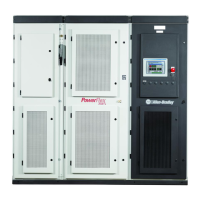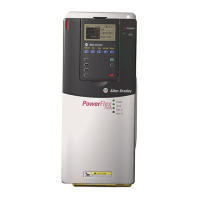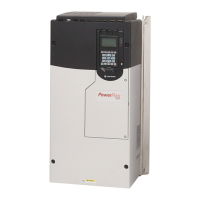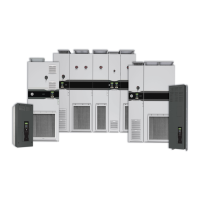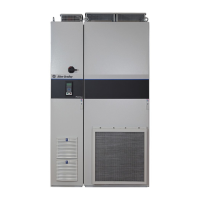Rockwell Automation Publication 7000-UM202H-EN-P - November 2023 197
Appendix D
Insulation Resistance Test
Overview When a ground fault occurs, there are three zones in which the problem may
appear: input to the drive, the drive, output to the motor. The ground fault
condition indicates a phase conductor has found a path to ground. Depending
on the resistance of the path to ground, a current with magnitude ranging
from leakage to fault level exists. The highest probability for the source of the
fault exists in either the input or output zones. The drive itself is rarely a source
of a ground fault when properly installed. This is not to say there will never be
any ground fault problems associated with the drive, but the chances are the
fault is outside of the drive. Also, testing the drive is more complex than testing
outside the drive.
With these two factors, it is recommended to first test the input and output
zones when encountering a ground fault. If the location of the ground fault
can not be located outside the drive, the drive will need to be tested. This
procedure must be performed with due care as the hazards to drive exist if the
safety precautions in the procedure are not followed. This is due to the fact the
insulation resistance procedure applies high voltage to ground: all the control
boards in the drive have been grounded and if not isolated, they will have high
potential applied to them causing immediate damage.
Insulation Resistance Test
Ensure you check the insulation levels before energizing power equipment.
Insulation resistance tests provide a resistance measurement from the phase-
to-phase and phase-to-ground by applying a high voltage to the power
circuitry. Perform this test to detect ground faults without damaging any drive
equipment.
This test involves “floating” the drive and all connected equipment to a high
potential while measuring the leakage current to ground. Floating the drive
means to temporarily remove any existing paths to ground necessary for
normal operation of the drive.
Follow this procedure to perform insulation resistance tests on the drive.
Failure to comply with this procedure may result in poor test readings and
damage to drive control boards.
ATTENTION: Use caution when performing an insulation resistance test.
High voltage testing is potentially hazardous and may cause severe burns,
injury or death. Where appropriate, connect the test equipment to ground.
ATTENTION: There are risks of serious or fatal injury to personnel if you do
not follow safety guidelines.
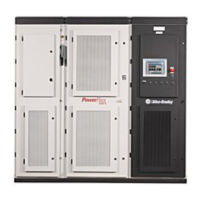
